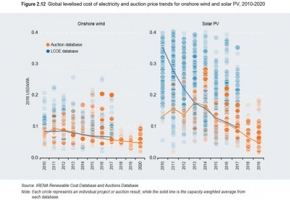Renewables Overtake Coal, But Lag Far Behind Oil And Natural Gas

LANCASTER, CA - MARCH 31: An array of solar panels near the Antelope Valley Poppy Preserve is viewed on March 31, 2019, near Lancaster, California. During the past ten years, large alternative solar and wind power generating operations located in the high desert have boosted California energy production. (Photo by George Rose/Getty Images) GETTY IMAGES
According to the Energy Information Administration (EIA) for the first time in 135 years, last year U.S. consumption of renewables surpassed consumption of coal.
There are two interrelated reasons for this: The collapse of coal consumption over the past decade, which was fueled by the rise of cheaper alternatives.
In total, the U.S. consumed 80.5 quadrillion BTUs (quads) of fossil fuels, 11.5 quads of renewables, and 8.5 quads of nuclear power. Renewables represented 11.4% of U.S. energy consumption in 2019, versus 8.1% a decade ago.
So, renewables did play an important part in coal’s demise, but they often get most of the credit. In fact, without cheap natural gas from the shale gas boom, U.S. coal consumption would still be substantially higher than U.S. renewable energy consumption.
Source: Forbes







